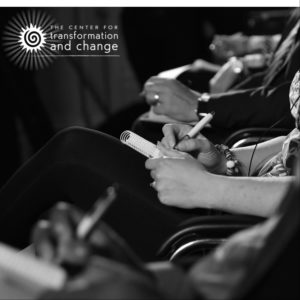Could you be the missing link in infusing equity and inclusion into ALL activities?
Lately, I’ve been talking a lot about equity and tools that facilitators can use to make their courses and trainings more effective by paying more attention to the diversity and group memberships of participants and facilitating greater interaction among them.
In my last post, I explained how you can successfully invite verbal participation from a full range of participants across group memberships.
Here, my goal is to expand on that a bit by helping you to acknowledge and engage the input and contributions across the range of group memberships. Why? I’ve been in too many sessions where the facilitator seemed far more enthusiastic about some people’s comments than others.
Upon reflection, I often noticed a pattern by group membership of whose comments were acknowledged and engaged, and others that seemed to “plop” and go unaddressed. Unfortunately, I notice this same unconscious pattern in myself at times! Can you relate?
What does the Research say?
Research has shown us:
- Teachers show the tendency to call on and positively reinforce the comments of boys more than girls ~ even after the teachers were made aware of their unconscious behaviors!
- Counselors tend to treat young, attractive clients more positively than those that do not fall into these group memberships.
In my experience, I’ve observed participants who have multiple privileged group memberships often get more time, attention, and recognition than those who have one or more apparent marginalized group identities.
For example, in most types of sessions (not stand alone diversity and inclusion workshops), I see:

- The comments of leaders get more attention than those employees with less positional status.
- The comments of whites get more serious consideration than those of people of color.
- The input of men get assumed to be accurate while the comments from women are more often questioned.
- The comments from older, more experienced participants are given more credibility than those from younger, newer participants.
Consistency, Intention: Your keys to infusing equity and inclusion
It is critical that as a facilitator, you pay close attention to how you acknowledge and respond to participants across identity groups, and become increasingly aware of inequality and any unconscious biases or tendencies to favor some groups over others.
I find that I must be very intentional to offset any unconscious bias I have. I make a commitment to consistently respond equitably to all participants as I work to find a way to use their comments to further learning goals.
Making sure that we give everyone, regardless of group memberships, the same degree of attention and respect models a key principle of diversity and inclusion and increases the chances for a more productive and engaging learning environment.
Which issues of diversity are being discussed – and which, if any – are not?
As we infuse issues of equity, inclusion, and diversity into the content of courses and workshops, it is important to pay attention to which topics of inclusion get addressed and which, if any, tend to not get on the table for discussion.
I believe it is usually helpful to use a broad range of examples and situations that depict a full breadth of differences so that participants can continue to deepen their cultural competencies to serve the increasingly diverse client/customer/student populations.
You’ll find it helpful when facilitating to track the conversation regularly and notice the issues being discussed.
Infuse diversity and inclusion by using prompts to encourage reflection and participation
For example, if I notice that only a few topics of diversity are being addressed, I might ask the group to reflect on its process:

- “As you think about the last 10 minutes or so of conversation, what topics of diversity have we been discussing? As we continue I’d like us to also broaden the conversation to also include other issues of difference.”
- “What are you noticing about the types of topics we are discussing? Any thoughts about why this might be? Who can bring in another topic of difference to add to our conversation?”
Another common dynamic I track is that some groups tend to avoid or move away from certain topics whenever they come up, or not engage them as readily. If you encounter these situations, respond in an attempt to raise awareness of this pattern as well as to re-center a broader range of issues in the conversation.
Try using these prompts:
- “It seems that whenever we start talking about issues of race, someone changes the topic back to age or sexual orientation. Has anyone else noticed this? What do you think might be under this dynamic?”
- “I’m noticing that the only time we talk about issues of sexism is when a woman brings it up. Anyone else track this? Why might this be happening in our group?”
If you’re really serious about getting all the tools and activities to design and train engaging, productive foundational workshops of diversity and social justice, I’ve got some exciting events rolling out – visit my Events page to find the one that’s the perfect fit for your organization.



